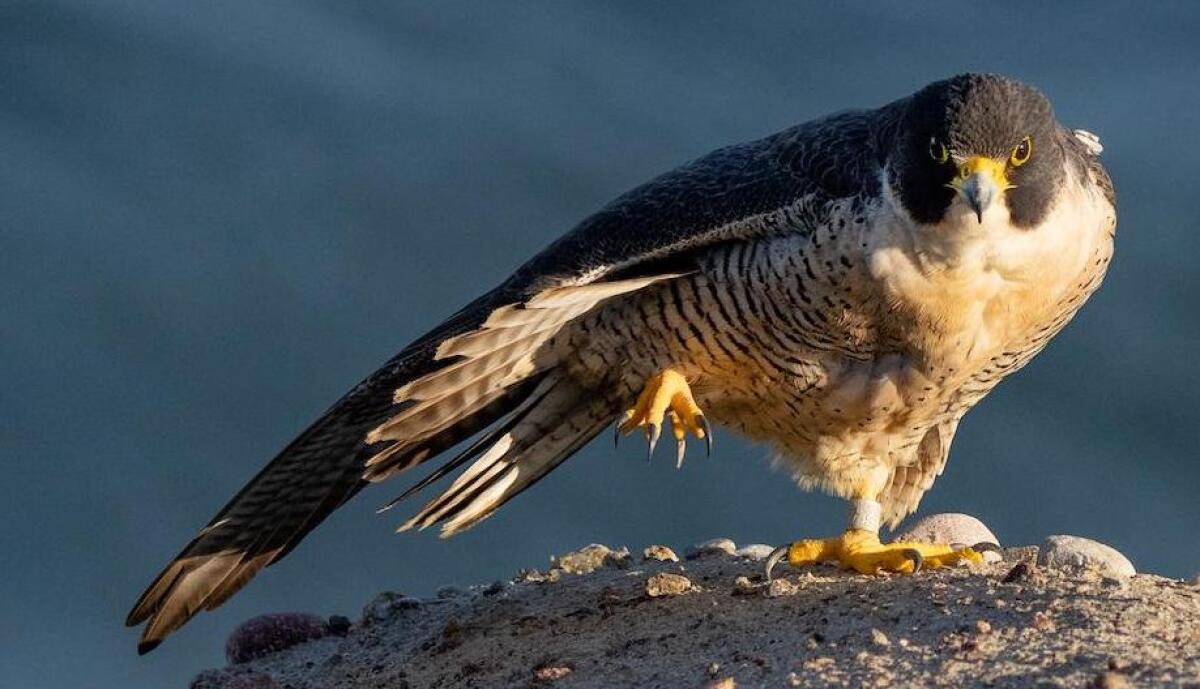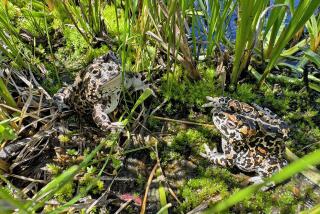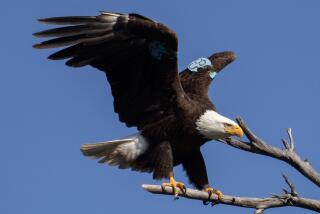Peregrine falcon numbers climb sky-high thanks to Yosemite protection plan

- Share via
The number of peregrine falcons at Yosemite National Park has soared over the past 15 years since the launch of a protection plan for the once-endangered raptors that nest in the park’s cliffs and peaks.
The National Park Service announced Thursday that the falcon species has made a “remarkable comeback” in Yosemite since the 1970s, when there were zero nesting pairs at the park.
In 2009, the park launched an effort to protect the birds by closing off portions of the cliffs to climbers so that nests would not be disturbed, which could provoke falcons to leave the area and abandon their young offspring.
“Peregrines hunt, soar, and nest on and around the park’s granite cliffs, domes, and spires because of a dedicated effort to protect them,” said Alexandria Walker, a biological science technician for the National Park Service in Yosemite.
A new method of rearing California condors at the Los Angeles Zoo has resulted in a record-breaking 17 chicks hatched this year.
Peregrine falcon numbers in Yosemite and across the country plummeted from the 1950s to the 1970s due to DDT poisoning. By 1974, there were only 324 pairs remaining in the United States. A nationwide ban on DDT in 1972 helped peregrines make a comeback.
The falcons were named an endangered species in 1970 but were removed from the federal endangered species list in 1999. They are now a “fully protected” species in California.
The National Park Service studied 43 cliff sites in the park this year — including El Capitan and Glacier Point — and documented 17 breeding pairs along with 25 baby peregrines and 15 nests, the park service said.
The park service noted that the protection plan has not closed more than 5% of its climbing routes, so the birds are protected and the climbers are largely unaffected.
Wildlife managers keep track of the nests throughout the season and close off routes depending on the family of birds’ activity. They also keep helicopters from flying low over the nests.
More to Read
Sign up for Essential California
The most important California stories and recommendations in your inbox every morning.
You may occasionally receive promotional content from the Los Angeles Times.












